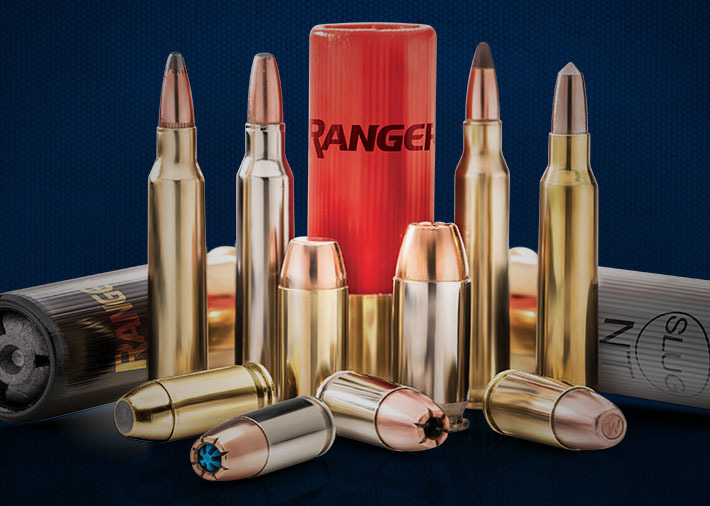Ballistics for Law Enforcement What do you really know?

At some point in your career you may be asked to serve on an ammunition selection committee. The choices you make in selecting the proper ammunition for the mission could be critical to the safety of the officer and the public that you are sworn to protect. Ballistic performance is one of the most important factors to consider in ammunition selection. Having a better idea of exactly what Ballistics is and where its importance lies in ammunition selection, is important information to have.
Ballistics Definition
The dictionary defines Ballistics as “the study of dynamics of projectiles”. Does this help you a lot? My guess is, probably not. At this point, armed only with this definition, you still have no useful information.
Ballistics Has 3 Distinct Parts
- Interior Ballistics
- Exterior Ballistics
- Terminal Ballistics
Still confused? Lets’ look at what each one means.
Interior Ballistics
This is the study of what happens when the ammunition is fired in the gun and ends when the projectile or projectiles exit the barrel. This information is extremely important to the manufacturers of the ammunition and weapon. What is the pressure, how clean is the powder, what is the dwell time of the projectile over the gas port, etc.? The ammo manufacturer must design ammunition that works properly in the weapon. The shellcase must be strong enough to handle the pressure and there must be enough pressure for the weapon to function properly. The gun manufacturer must design the gun with enough strength to handle the pressure and function reliably with any type of ammunition that meets stringent SAAMI industry standards. Although this is of great concern to the gun and ammunition manufacturers, the information that internal ballistics supplies is not of much use to the police officer. Either the gun works or it doesn’t is the bottom line here.
Exterior Ballistics
This is the study of what happens between the time that the projectile leaves the barrel and it hits the target. Velocity, Trajectory and Accuracy are the most important parts of exterior ballistics. These things are pretty important to a Special –Ops Team for their long range rifles. Accuracy is less important to the pistol shooter because of the shorter distances at which these weapons are used.
Terminal Ballistics
This is the study of what happens after the bullet hits the target and is extremely important to consider when selecting duty ammunition.
The FBI has developed special barrier test procedures using 10% ballistic gelatin, light cloth, heavy cloth, wallboard, plywood, light steel and automobile glass to test the terminal performance of ammunition.
For each medium,
- How deep does it penetrate?
- How much does it expand?
- How much weight does it retain?
What Terminal Ballistic attributes are important to your department?
Some departments think that quick expansion and shallow penetration are important. Others think that deep penetration and slower expansion is the way to go. Some think that performance through glass means everything. Others could care less about this medium. What you need to think about is what barriers are important to you and rank them accordingly. Many times a round that offers superior performance in one medium, does not perform as well in other mediums The key is to select a round that has the performance that you want in the mediums that are important to your department.
After you have determined what Terminal Ballistics performance attributes are important to your department’s mission, study the manufacturers barrier performance data for the caliber in which you are interested. Compare it to what your needs are and act accordingly. Better yet try to attend a ballistics workshop where you can actually be involved in the workshop testing. Winchester has a fleet of 12 Ballistics Workshop Trailers across the country putting on these workshops for interested police agencies. Call your Winchester Law Enforcement Distributor to see about attending one in your area.
Other Considerations
Your task on the ammunition selection committee may extend past duty ammunition to include special purpose, practice or reduced hazard ammunition. There is a growing concern in the police market for reduced hazard products, which eliminate heavy metals at the firing point. Some also have additional features, such as no lead in the projectile and frangibility to allow for safe, “no backsplash,” close range practice against hard barriers. As you add attributes in the “Reduced Hazard” category the price also goes up. Decide what attributes are important for your department and situation, then buy a product that has those attributes. There is no sense in paying for more attributes than you need.
When in Doubt Ask
Winchester has a Senior Law Enforcement Ammunition Technical Specialist to answer any questions you may have. You may contact him directly by phone from 8:00 to 4:30 Central Time Monday through Friday. You can also write, e-mail or fax at any time with your questions.
Douglas K. Lindhorst
Winchester LE Sales Support
600 Powder Mill Road.
East Alton IL. 62024-1273
Phone: 618 258-3120
E-mail: DKLindhorst@olin.com
The purpose of this article is to give you information you need to help you make a proper decision on ammunition selection. Taking the time to do this will result in a better decision that can both be cost effective and lead to increased safety for your fellow officers and the people they are sworn to protect.
Winchester Law Enforcement Ammunition
East Alton Illinois
